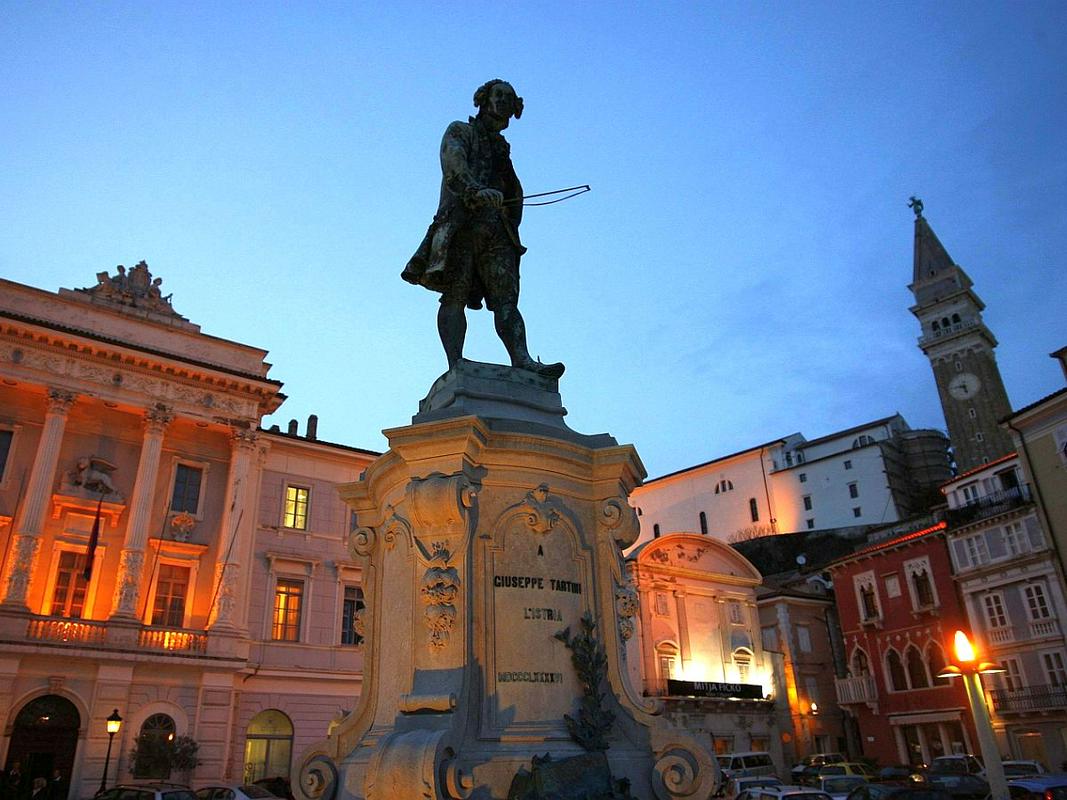
Visitors to the Slovenian coastal town of Piran encounter one name at almost every step. From the main square to the largest hotel, the name Tartini seems to be everywhere. Once a year, a musical festival in Tartini’s honor is held in the town, and tourists love having their pictures taken next to a statue bearing the likeness of Piran’s famous son.
When Giuseppe Tartini was born in 1692, Piran was a very different place. A part of the Republic of Venice, the town was dominated by a few aristocratic families, whose offspring traveled throughout the Italian-speaking lands. Tartini’s mother was a part of Piran’s aristocracy, while his father was a noble from Florence. Tartini’s privileged background meant that higher education was available to him. For several years, he studied to become a Franciscan friar; it was at that time that he received his first musical training.
Tartini had a will of his own, however, and ran away to Padua at the age of 16. There, he studied law and practiced fencing. His love for the violin came later – almost by chance. While in Padua, he decided to elope with a local girl named Elizabeth Premazone. Unfortunately for Tartini, Premanzone was the niece of the city’s bishop, who didn’t approve of the marriage and charged Tartini with her abduction. To escape, he had to seek refuge at Assisi, where he began to study the violin. A few years later, after he was pardoned by the bishop, Tartini began to perform in public – to great acclaim from the audiences.
Throughout his career, Tartini published a number of highly respected musical pieces, primarily concerti and sonatas. One of them, the Devil’s Trill Sonata, is considered an extraordinarily difficult piece to perform. It was inspired by a dream in which the Devil offered to become Tartini’s servant; when the Devil played Tarini’s violin, he made an unforgettable trill-like sound, which Tartini later made the basis for the sonata. Over the years, Violinist who struggled with the devilish sonata even circulated a rumor that Tartini must have had six fingers on each hand to master its notoriously difficult-to-peform trills.
In 1721, Tartini was named “maestro de capella” at the Padua Cathedral and for years, he toured Europe to pass on his knowledge to younger generations of violinists. When an old fencing wound made playing the violin difficult for him, Tartini turned his attention to the theory of sound. Among his various scientific works, he discovered that when two tones are played at once, listeners can sometime shear a third tone whose frequency is either the sum or the difference of the original tones’ frequencies – a phenomenon now known as a combination tone.
Tartini died in 1770, at the age of 77. One of his instruments was a Stradivarius violin that Tartini eventually passed on to his students. Known as the Lipinski Stradivarius, it’s considered one of the finest examples ever built by the master craftsman Antonio Stradivari.

































































